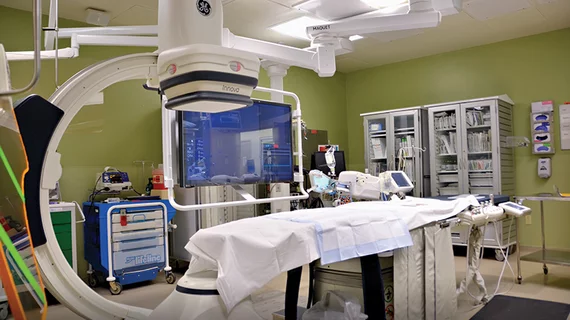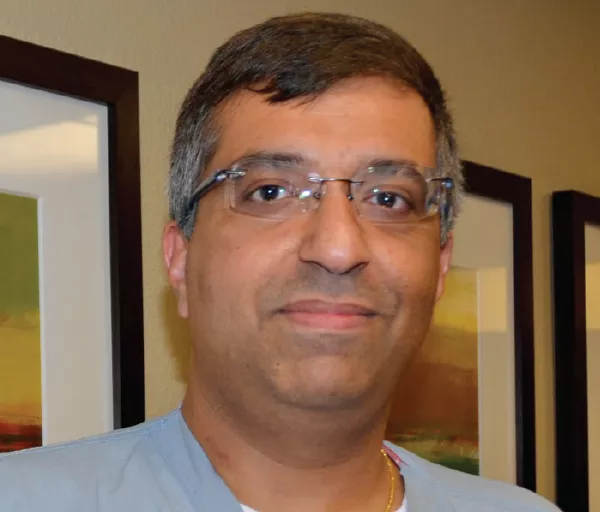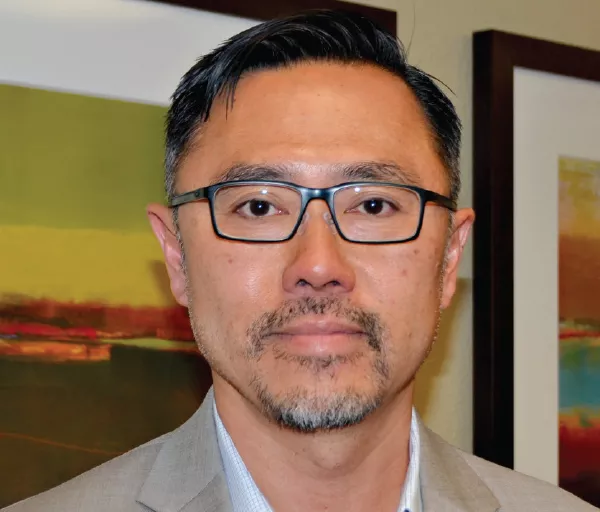[ARTICLE] Building a Protected PCI Program: How BUMC Phoenix Is Enhancing Revascularization Outcomes One Patient Transfer at a Time
To make a difference in people’s lives through excellent patient care is both mission and mantra at Banner Health. The interventional cardiology team at Banner University Medical Center Phoenix is focused on effectively escalating patient care as the primary referral site for high-risk and emergent patients in need of revascularization—specifically those with acute MI in cardiogenic shock—across the network of hospitals. A transfer is just a phone call away. Take a closer look at how BUMC Phoenix’s successful Protected PCI program is improving and saving patient lives.
By the numbers, Banner Health is among the top 10 largest nonprofit hospital systems in the country. BUMC Phoenix is part of the health system that operates 29 hospitals, including three academic medical centers, and other related health entities and services in Alaska, Arizona, California, Colorado, Nebraska, Nevada and Wyoming. Banner has evolved from a health system of hospitals into a fully integrated system that includes expanded services through Banner Health Network; Banner Medical Group; and Banner University Medicine, the academic medicine division of Banner Health that merged with the University of Arizona College of Medicine and is anchored in Phoenix and Tucson.
“Ultimately both as physicians and as a hospital, our primary goal is to provide care to the patients we serve,” says Ashish Pershad, MD, the interventional cardiologist who leads the system’s complex PCI program. “That mission embodies the way Banner and physicians working at our medical center think.”
BUMC Phoenix links academic medicine with community care, serving as the go-to facility for patients needing elevation of care, such as a patient on ECMO or a patient who needs an LVAD. Patients transferred to BUMC Phoenix come from throughout the Southwest. About 30 to 40 percent are transferred from community hospitals surrounding Phoenix, while some 20 to 30 percent are referred from county or VA medical centers. Another 10 to 20 percent arrive from the indigent population living near the medical center. Many are post-MI cardiogenic shock patients or those with post-infarct mechanical complications, and many need left ventricular support.
“It’s the [patients who] either are spiraling in spite of treatment or are just too sick to get better,” Pershad says. “Those are the ones who end up coming our way. Most patients are in cardiogenic shock in the setting of either an acute MI or just shock in general, either due to an acute MI or due to a fulminant process like myocarditis or pericarditis, or from valvular disease.”
Most patients arrive already on some form of hemodynamic support, usually in need of either support of a higher magnitude or revascularization. The patients are often older and vulnerable. “So the thought is to regionalize the care so that these high-end procedures are performed at centers that have the most experience so that they can be done thoughtfully and with an eye on cost containment and best practices,” Pershad says.
“The beauty of the Banner system is that it has that capacity,” echoes H. Kenith Fang, MD, chief of cardiothoracic surgery. “Any Banner facility that has a cardiothoracic problem in their emergency room or as an inpatient has access to cardiovascular care.”
Expanding Protected PCI
The interventional team at BUMC Phoenix treats patients in its six cardiac cath labs, two electrophysiology labs, four coronary and peripheral labs and two hybrid ORs. For complex and high-risk PCIs, the team often relies on the Abiomed’s Impella family of left-heart pumps. This spring, the FDA cleared the family of left-heart pumps for treating acute MI patients with cardiogenic shock—which expands the treatment options for 5 to 8 percent of the patients who arrive in Banner’s ER.
The expanded approval allows the use of the left-heart pumps to help stabilize the shock patient’s hemodynamics, unload the left ventricle, perfuse the end organs and rest the heart enough to, ideally, recover full function. The left-heart pumps are the first and only percutaneous temporary ventricular support devices deemed safe and effective for the cardiogenic shock. According to the new labeling: The Impella 2.5, Impella CP, Impella 5.0 and Impella LD catheters, in conjunction with the Automated Impella Controller console, are intended for short-term use (<4 days for the Impella 2.5 and Impella CP and <6 days for the Impella 5.0 and Impella LD) and indicated for the treatment of ongoing cardiogenic shock that occurs immediately (<48 hours) following acute myocardial infarction (AMI) or open heart surgery as a result of isolated left ventricular failure that is not responsive to optimal medical management and conventional treatment measures with or without an intra-aortic balloon pump.
Pershad views the FDA approval as proof the pumps works for patients in shock. “It is definitely a stamp of approval and clearly I think will make it easy for patients now to have access to this technology,” he notes. “For the naysayers, this clearly is one of those defining moments. Listen, this is something you have to take note of and can save lives.”
Fang adds an exclamation point. “Having Impella within your program elevates you to a higher level because it allows you…to take patients to surgery that are higher risk than you normally would never have.”
It Takes a Village
The BUMC Phoenix team has fine-tuned the transfer process. Any physician can call a single phone number 24/7/365.
“At least once or twice a week, when patients present to these outside hospitals with cardiogenic shock or myocardial infarctions, and once they receive a coronary angiography, it’s determined that the coronary anatomy is too complex, high risk, ejection fraction is low,” says Interventional Cardiology Fellow Kamaldeep Singh, MD. “Patients are transferred to us. We have a heart team discussion about [what] the best revascularization approach is. A lot of times our surgeons decide that Impella-assisted PCI is the best option because we’ve had such great results with it.”
Interventional cardiologists and cardiothoracic surgeons work together closely. “It’s collaborative,” Fang says. “I’ll talk to my interventional cardiologist who’s sitting right there and between the two of us, we will determine what is the safest option, what’s the best option for the patient.”
Protected PCI is often the best option because it ensures blood flow to the myocardium during the intervention. “You’re not concerned in treating complex anatomy with rotational atherectomy or prolonged balloon dilations,” says Interventional Cardiology Fellow Sundeep Adusumalli, MD. “You buy yourself time, to figure out the best strategy for your patient and do a more complete job because you know you have support.”
The team inside the cath lab is onboard, too. “What differentiates our cath lab from a lot of the other cath labs is that we are able to do the high risk,” says Roger Jacobs, RN. “We do them every day, from the day time, all the way into the middle of the night. We have the staff, the doctors and the people in the ICUs who can take of the very critically ill patients that sometimes the other hospitals are not able to do.”
“One of the main things is coordinating with the physician ahead of time when we know that a patient’s coming and they’re going to need revascularization,” says Marcus Harris, RTR, radiologic technologist in the cath lab. “We always have everything pulled and ready to go. Even in the spur-of-the-moment case. The staff are well trained and able to go with the flow.”
Saving Lives
The patients that physicians remember are those with the most dramatic recovery. As Pershad says, “I can think of at least three people in the last month and a half that we’ve had that came from, one from Flagstaff, which is about 100 miles away, another from Show Low, which is another 180 miles away, and one from within Maricopa County. One was in cardiogenic shock from valvular disease, one was in cardiogenic shock after an acute MI, and one was a complication following a procedural intervention at another facility. They all ended up coming to our facility and, thankfully, had great outcomes.
Another patient stands out in Pershad’s mind, arriving at BUMC Phoenix “literally on death’s door.” The 47-year-old patient was suffering cardiac arrest when he presented at the ER of Banner Ironwood Hospital. He was quickly airlifted to Banner Heart for an angiogram, and had another arrest. The patient—diagnosed with multi-vessel, advanced coronary disease with total occlusions and an ejection fraction of about 20 percent—was deemed ineligible for surgery so he was treated with high doses of pressors. He was transferred to BUMC Phoenix, arriving with a blood pressure in the 80s and heart rate of 130. “We were able to escalate his level of support pretty quickly and able to that night over three hours to revascularize him completely and turn him around within a 48-hour window,” Pershad recalls. That night was Christmas, a gift for sure.
After 18 days, he left the hospital with four stents and a defibrillator. Rehabilitation was slow at first, but steady. And now, seven months later, is a functional Class II, getting back to enjoying life, boating and biking with his family and two young sons.
“To me, thatwould not have been possible without the ability to revascularize completely, which would not have been possible without the ability to provide full left ventricular support for us to be able to do our job,” Pershad says. “With his pump being as bad as it was when we started, his tolerance for any further ischemia during the procedure would have been zero. I think, frankly, the LVAD facilitated his recovery by letting us do our job.”
To the patient, the experience was “life saving. I was lucky to be transferred here [to BUMC Phoenix] and that Dr. Pershad was here. He just didn’t give up and that is why I am still here. My outlook on life has changed. I have time with my kids. We do things together, we don’t put it off. And I take my medicine and eat right to be sure I stay healthy.”
Building Success
The team at BUMC Phoenix has learned that getting the job done well in Protected PCI comes down to teamwork, regionalized care and awareness building among physicians.
Physicians work as a team, as do nursing and cath lab support teams. Interventional cardiologists and surgeons work closely on complex cases. Being part of a health system promotes regionalization, the team agrees. And having the infrastructural support from the cath lab and ICU management perspectives results in optimal outcomes.
“If I were to define the single most important change that needs to occur to promote a regional system of care model,” Pershad notes, “I would say a joint decision making process that involves the patient’s treating cardiologist, interventional cardiologist, and the heart surgeon. Looking at the patient jointly and coming up with an action plan after that.”
Experience and success breed more success, with word of mouth spreading and more patients being transferred for Protected PCI. “Physicians have realized that patients sent to a program like ours, the majority of the patients that shouldn’t make it make it,” Pershad says.
He and other members of the interventional team hold Angio Club meetings once a month to share good outcomes with electrophysiologists, non-invasive cardiologists, referring physicians and radiologists. Similarly, the team has engaged the medical staff services department. “It has resonated well with the referring physicians. It helps them understand the ebbs and flows, and the highs and the lows, that we feel when we take care of these patients.”
Like most interventional programs across the country, cath lab volume at BUMC Phoenix has seen a steady decline in simple PCI volume over the last several years. Yet Banner’s complex PCI volumes are growing. “We’ve reinvented ourselves two or three times over the last several years,” Pershad notes. “The first was when we became a legitimate program for chronic total occlusion angioplasty. We were able to attract patients with those type of problems which keep our volumes up and keep the complex skill set high in the cath lab. All of that along with a very robust high energy engaged surgical program has made us a very successful Protected PCI complex coronary program.”
At the core of helping patients get better is collaboration and communication among physicians and staff, Pershad says. “We all have to put aside egos and look at how we foster a sense of collaboration between heart surgeons, non-invasive cardiologists, community cardiologists, and our fellow interventionists. If you can get past those barriers, you will be on your way to having a good program and touching a lot of patient lives.”
Series: Building a Protected PCI Program
| Episode 5: Enhancing Revascularization Outcomes One Patient Transfer at a Time Featuring Banner University Medical Center Phoenix Watch Webinar | Read Case Study |
| Episode 4: Defining Algorithms, Selecting Patients Featuring VA North Texas Healthcare System in Dallas Watch Webinar | Read Case Study |
| Episode 3: The Community Hospital Approach Featuring Bakersfield Heart Hospital in Bakersfield, Calif. Watch Webinar | Read Case Study |
| Episode 2: The Programmatic Approach Featuring University of Washington Medical Center in Seattle. Watch Webinar | Read Case Study |
| Episode 1: The Heart Team Approach Featuring Einstein Medical Center in Philadelphia. Watch Webinar | Read Case Study |



